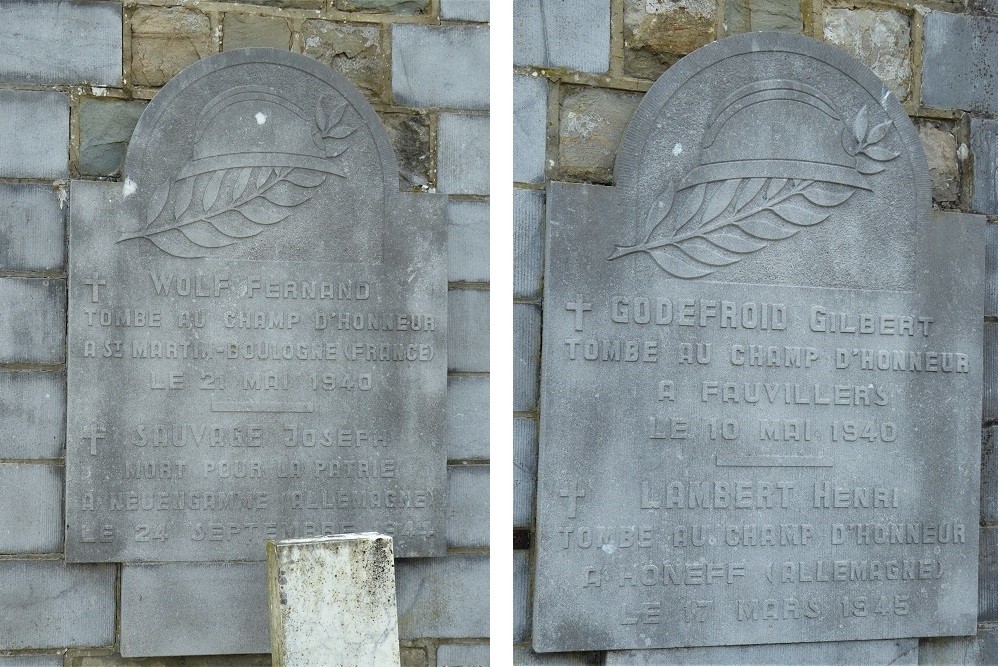Belgian War Graves Felenne
The municipal cemetery contains four war graves from the Second World War.
The graves lie in front of a chapel on which 2 memorial plaques hang.
Left :
WOLF Fernand : fallen on the field of honor in St.Martin-Boulogne (France) on May 21, 1940.
SAUVAGE Joseph : died for the fatherland in Neuengamme (Germany) on September 24, 1944.
Right :
GODEFROID Gilbert : fallen on the field of honor in Fauvillers on May 10, 1940.
(He was a soldier with the 1st Ardennes Fighter 2nd Battalion 5th Company. He was killed by a bullet while carrying out destruction missions in the vicinity of the Luxembourg-Belgian border immediately after the German invasion.)
LAMBERT Henri : fallen on the field of honor in Honeff (Germany) on March 17, 1945.
On the grave of Henri LAMBERT is a memorial plaque and an authentic stone from the railway bridge at Remagen.
The commemorative plaque reads:
" This stone comes from the bridge of Remagen that our friend Henri Lambert crossed as a winner for several hours before dying a hero.
The brother of the 16th battalion of V.D.G. is proud of the first Belgian soldier who fell beyond the Rhine by the enemy on March 16, 1945".
Built during the First World War, the Remagen Bridge was intended to quickly transport German troops and supplies across the Rhine to the Western Front.
The bridge was designed by Karl Wiener, an architect from Mannheim.
Its length was 325 meters, it had a height of 14.8 meters above the average water level. The highest point was 29.25 meters. The bridge had two tracks and a footpath.
During the Second World War, one of the tracks was made suitable for other vehicles by means of planks.
Remagen Bridge - the last intact railway bridge over the Rhine - was captured by soldiers of the American 9th Armored Division on March 7, 1945 during Operation Lumberjack.
This capture gave the Allies the opportunity to have a large number of troops cross the Rhine in a short time, so that a stable bridgehead could be formed on the east side of the river. The 1st Infantry Division crossed the Rhine on 15 and 16 March 1945 and was deployed to further strengthen and expand the beachhead.
Several attempts by the Germans to destroy the bridge were unsuccessful.
However, on March 17, 1945, the bridge suddenly collapsed.
Do you have more information about this location? Inform us!
Source
- Text: Marie-Christine Vinck
- Photos: Marie-Christine Vinck
Nearby
Museum
Point of interest
Monument
- War Memorial Felenne - Felenne (Beauraing)
- War Memorial Winenne - Winenne (Beauraing)
- War Memorial Rancennes - Rancennes
Cemetery
- Belgian Graves Veterans Winenne - Winenne (Beauraing)
- Belgian War Grave Bourseigne-Neuve - Bourseigne-Neuve
- Belgian Graves Veterans Bourseigne-Neuve - Bourseigne-Neuve (Gedinne)





